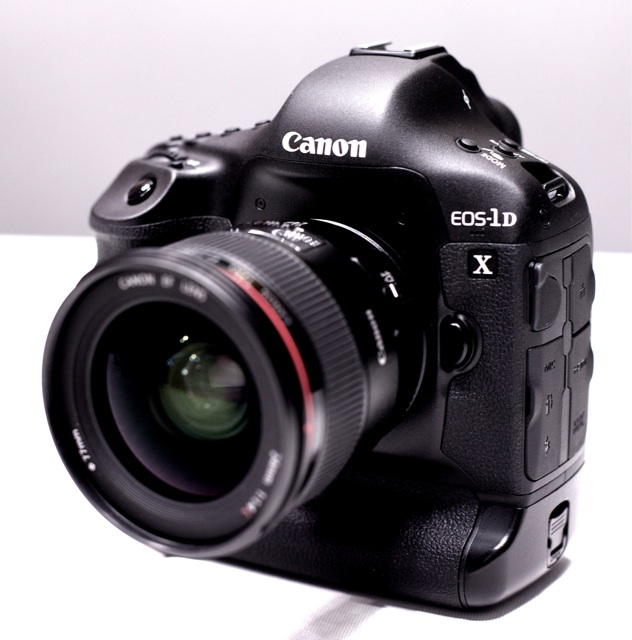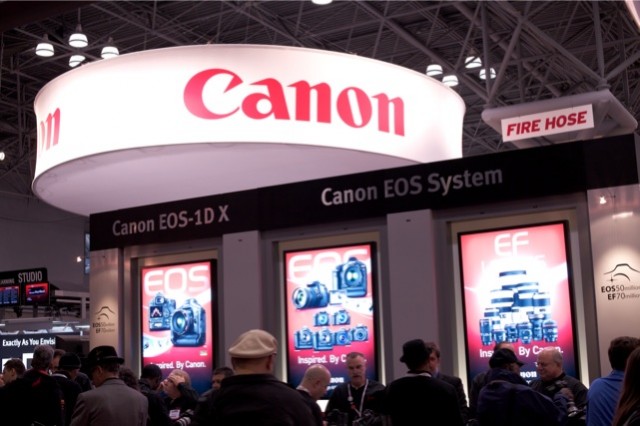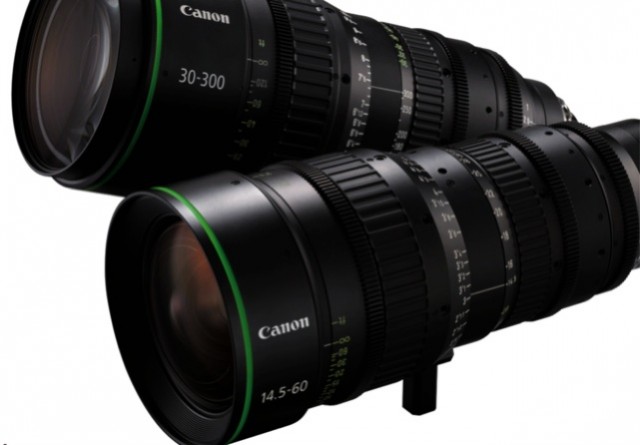
I sat down with Chuck Westfall for a little while at PhotoPlus 2011 to talk about the Canon 1D X and what else is going on at Canon.
We talked about the new autofocus system and the abandoning of the ability to autofocus at f/8, which has become a point of contention with some bird photographers and others. When Canon looked at redesigning the existing AF system that’s been part of the Canon EOS 1 series for several years now, there were two primary requirements.
First, spread the AF points out to cover more of the frame. A common misconception between 1Ds and 1D users was that the 1D series offered AF points with more coverage; however, the same AF system was used in both. The difference between the “coverage” was due to the 1.3x crop sensor on the 1D line. The need for more coverage on the full frame models was a big request and a top priority when reinventing the new AF system.
The second objective with AF system was to add more points, including more cross-type and higher precision center column dual cross-type sensors. The result in the 1D X is 61 AF points and 41 total cross-type points, which is up from 45 total AF points on the 1D Mark IV, 39 of which were cross-type points. (See an overview of the 1D Mark IV’s AF functionality.)
In order to make the AF system perform with the speed an accuracy Canon expected from it, the f/8 AF feature wasn’t a viable option. While no one wants to give up a feature on a camera, the f/8 AF feature was somewhat crippled by only using the center AF point, which was not available as a cross-type for use at f/8. Westfall offered a couple of compromises on real-world operation at f/8 on the 1D X – using the contrast-detect live view AF, or zooming in on the LCD for manual focus acquisition. Obviously, these solutions only work for static subjects where focus tracking is not involved. The big losers are those photographers who shoot birds in flight. AF at f/8 (no matter what limitations were previously there) is simply not an option on the 1D X.
I also wanted to get a better feel for the functionality of the use of color information in the AF and AE system, which is driven by Canon’s new 100,000 pixel RGB sensor. The key aspect of the color and face recognition is that it is used for tracking purposes and not focusing, which is not dissimilar from the way that Nikon’s 3D focus tracking works on a conceptual level. Canon claims that its system is much more sophisticated, which is somewhat demonstrable by the use of a 100,000 pixel RGB sensor in the 1D X as compared to the 1,000 pixel RGB sensor in the Nikon system. The best way for me to understand the technical explanation is that the 1D X uses the color and facial recognition to tell the AF sensor where the subject is at, and then the phase difference AF sensor points to the subject and calculates the focus.

When I initially picked up the 1D X, I immediately noticed that it was heavier than the 1D Mark IV. Westfall confirmed that it was a heavier camera; however, it hasn’t received an official spec weight (and won’t get that spec until it is ready for production). The guesstimate is that the 1D X is a couple of ounces heavier than the 1D Mark IV.
HDMI-out is not clean HDMI-out on the 1D X. As a result, you won’t be able to capture an uncompressed signal over HDMI to something like the Atomos Ninja. The reason given was that there wasn’t the processing power to make that happen.
Here are some 1D X sample images. Link.
There is no headphone monitoring because there was no physical room to add it on the 1D X. The LAN port was a priority even though Canon recognizes that the headphone jack is a desired feature. Canon expects that most serious shooters will use a dual system for professional work. Additionally, the on-screen monitoring and audio level adjustments during video capture are a huge advantage for the 1D X over prior models. If you missed it, check out my 1D X hands-on video where I talk about this feature.
There are no additional details yet about what’s coming on November 3rd.
Canon is taking the new Hollywood pro support center very seriously. It’s a huge market opportunity for Canon, which was created from the widespread adoption of the Canon 5D Mark II as a serious cinema tool. Don’t overlook what Canon is doing elsewhere in the video market though. The XF305 and XF105 are serious camcorders and are causing a bit of a stir in their own niche.

On a side note, everyone seems to have forgotten about the Canon PL mount lenses announced at NAB this year, which cover a Super35 sensor and meet 4K image quality standards… 4K or bust?
The PIXMA PRO-1 is available in limited quantities in the US starting Monday, October 31 for $999.
That’s about all that I’ve got for today.
This PhotoPlus 2011 coverage is sponsored by B&H Photo, which Photography Bay proudly recommends as the number one source for all your photographic needs. B&H Photo is located online at www.bhphotovideo.com and in New York City at its 70,000+ sq. ft. SuperStore.


I see much about what the 1D X offers previous 1D4 users, but not much about what it offers previous 1Ds3 users… particularly if you tend to shoot static objects with manual focus lenses at low ISO
Any thought on what it means for this subset of 1 series users?
Are you talking about the reduced resolution Keith, or there are other aspects of the camera that differentiate it from the 1Ds 3?
Of course, we have to wait until we see some real world results; however, I’m expecting that the gain in dynamic range from the increased pixel size and gapless microlenses outweighs the marginal reduction in resolution. I think that feature helps every kind of shooter in the image quality department.
Overall, the camera doesn’t do a lot in terms of sexy features for static subjects and manual focus, in which case, I wouldn’t think that it’s a worthwhile upgrade for those shooters. I think other 1Ds3 users have a lot of reasons to upgrade just like the 1D4 users.
However, as you know, there are rumors circulating of a higher megapixel camera coming from Canon. And, maybe that will be the one that appeals to those types of shooters and give them more incentive to upgrade.
Indeed, I look forward to making some real comparisons between a 1D X and the 1Ds3
It would be great if the differences were obvious… although I’m not expecting too much at 100 ISO on a detailed stationary subject with a good lens.
My own 1Ds3 will be over 4 years old by the time the 1Dx ships, so replacement is of slightly more than academic interest. I’d certainly hope for some ‘noticeable’ advances (of use to ‘studio users’) in 4 years
I’m still taking the higher MP rumours with a big pinch of salt – if Canon are currently calling the 1Dx a replacement for the 1Ds3, then how long would it be until they could bring something else out that didn’t contradict some of their 1Dx marketing.
I don’t expect that we’ll see any non Canon sourced sample images until pretty close to shipping.
Keith, forget the age of yout device. May I know the top 5 things 1Ds3 CANT do for you? Not arguing … just curiosity
Thanks for following up on the Pro-1 availability question, Eric.
No problem Tim. I had missed that info too, and I was a little surprised that it’s available so soon. Cheers.
Eric – not that much really :-) There is little I’d say is ‘wrong’ with the 1Ds3 for the uses I make of it.
I’m finding when I do printer testing, that as stuff gets better, it becomes much harder to find meaningful improvements. To get a big jump almost implies that there was something wrong in the earlier model.
I could do with more resolution sometimes when I’m resampling for large prints.
The FPS and AF are more than good enough
Battery life is fine.
I don’t mind the twin card types
And features where the 1D X might well help…
Dynamic range in bright light (but I can do multiple exposures)
Residual noise in the shadows
I do sometimes shoot at 3200 ISO – so 12800 might be nice…
Slight pattern noise in some night time work
Maybe images will scale a bit better than the 1Ds3
Who knows – I might even develop a taste for shooting video :-)
So, don’t get me wrong, there’s nothing ‘bad’ about the 1Dx, just I was perhaps expecting something more obviously a jump (in features I use) from what I’ve currently got, after four years.
But hey, maybe it will be … no-one has seen what it can actually do, so we’re looking at this through the prism of Canon’s publicity and spin.
Oh and I do appreciate that in terms of 1 series market and sales, there are far more people likely to be impressed by FPS, ISO, video and AF :-)
Keith, I personaly define a “big jumb” migrating from two generation before to current one. camera makers have a strategy similar to intel’s tick-tock (every tick is shrinking, and every tock is a new archirecture). I think 1Dx is in tick stage, has lots of features and improvements, but not actually a different animal
Waitng 8 years maybe too painful for you, especially living and working under new models hype. But 1Dx replacement will be real big jump: in-sensor phase detection, electronic shutter, 120fps full hd, 3 times brighter with same poweretc. consumption display, native 6 digit ISO, above 120db dynamic range, etc.
Yes Eric, I do appreciate that and skipped the 1Ds2 for just that reason (although I got my 1Ds in 2003)
Another 3-4 years will push my 1Ds3 into ‘rather old’, particularly since I use it for day to day work. At least I fully depreciate camera bodies over 3 years, so there are perfectly good tax reasons for the business to replace it, and still recoup a bit on its resale value. Accounting is quite different trading as a limited company (in the UK) rather than as a self employed person (more common in the wedding/social market)
Looks from your ‘specs’ that the next model will also be packed full of stuff I don’t need :-)
Here’s my hands on preview of the Canon EOS 1D X:
http://paul-d.tv/blog/2011/10/28/canon-eos-1d-x-hands-on-report/